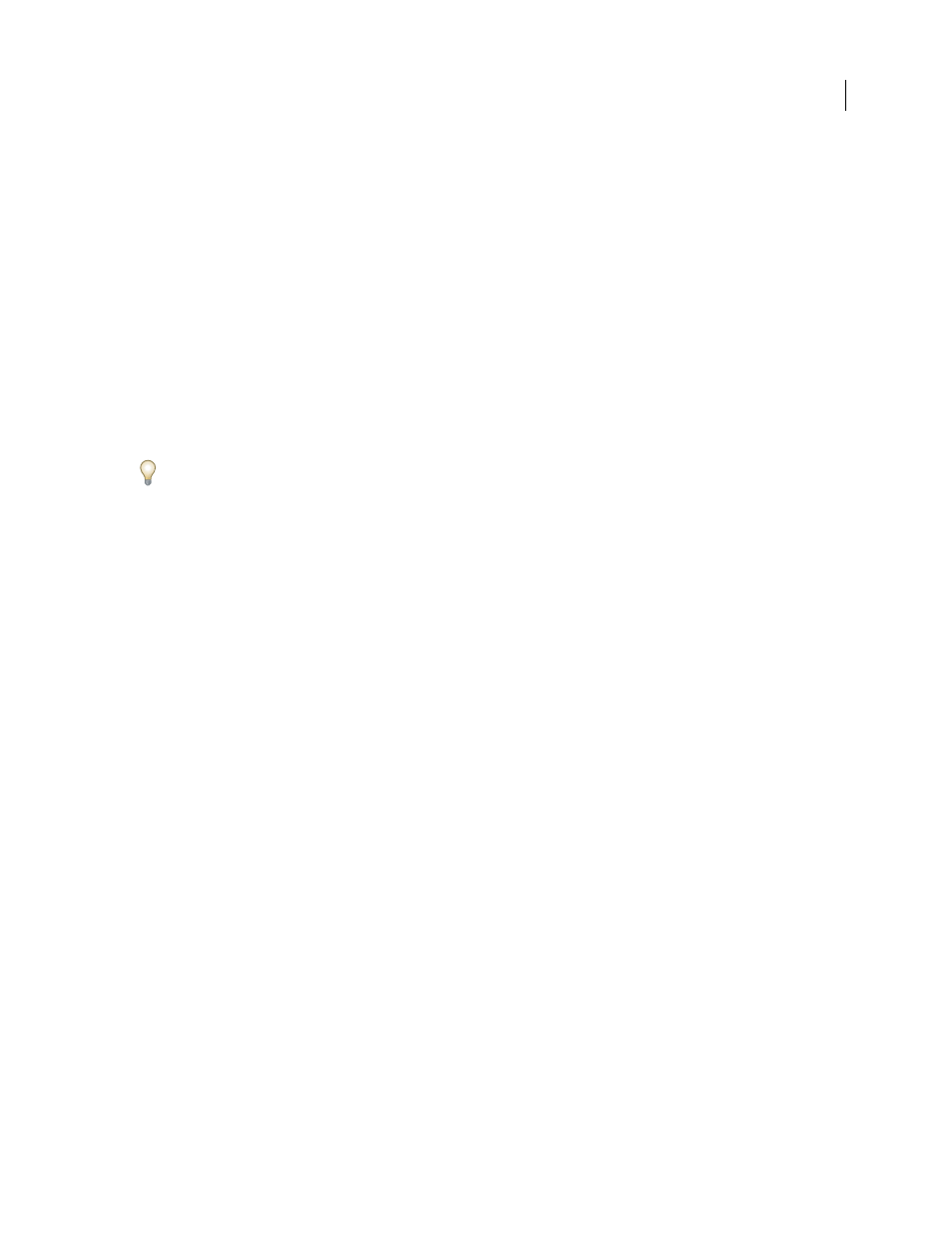Editing 3d textures (photoshop extended) – Adobe Photoshop CS3 User Manual
Page 615

PHOTOSHOP CS3
User Guide
608
View cross sections
You can view a cross-section of a 3D model by intersecting it with an invisible plane that slices through the model at
any angle and displays content only on one side of the plane.
1
Click the Cross Section Settings icon to open the pop-up palette.
2
In the Cross Section Settings area, select Enable Cross Section and choose options for alignment, position, and
orientation.
Alignment
Select an axis (x, y, or z) for the intersecting plane. The plane is perpendicular to the selected axis.
Position and Orientation
Use Offset to shift the plane along its axis, without changing its tilt. At a default offset of 0,
the plane intersects the 3D model at its midpoint. At maximum positive or negative offsets, the plane moves beyond
any intersection with the model. Use Tilt settings to rotate the plane up to 360
0
in either of its possible tilt directions.
For a particular axis, the tilt settings will rotate the plane along the other two axes. For example, a plane aligned to
the y-axis can be rotated around the x-axis (Tilt 1) or the z-axis (Tilt 2).
Flip
Changes the displayed area of the model to the opposite side of the intersecting plane.
To combine two rendering modes on a model, duplicate the 3D layer, then change the render mode on the duplicated
layer. Set the cross section to the same position on each layer, then flip one cross section.
View 3D animations
If a 3D file contains animation, it is included with the file when Photoshop opens the 3D model. To view animations,
you use the animation controls in the options bar.
1
Choose Layer > 3D Layers > Transform 3D Model.
2
Do one of the following:
•
Click playback buttons to play the animation, rewind it, or advance forward or backwards by frame.
•
Click the arrow next to the playback buttons to open the slider control, then drag the slider forward or backwards
to move through the animation.
Editing 3D textures (Photoshop Extended)
You can use the Photoshop painting and adjustment tools to edit the textures contained in a 3D file. Textures are
imported as 2D files with the 3D model. They appear as entries under the 3D layer.
To display or hide an individual texture on a 3D model, click the Eye icon next to the Texture layer. To hide or display
all textures, click the Eye icon next to the top level Texture layer.
Note: You cannot edit textures when the 3D tools are active. Click Commit or Cancel in the options bar to exit 3D
transform mode.
For a video on editing textures, see
.
1
Double-click a texture in the Layers palette.
The texture opens as a separate document in its own window.
2
Use any Photoshop tool to edit or paint on the texture.
3
Save the texture document. The updated texture is applied to the 3D model.
4
For non-Photoshop format 3D files, choose Layer > 3D Layers > Replace Textures after editing texture files to save
your changes.
